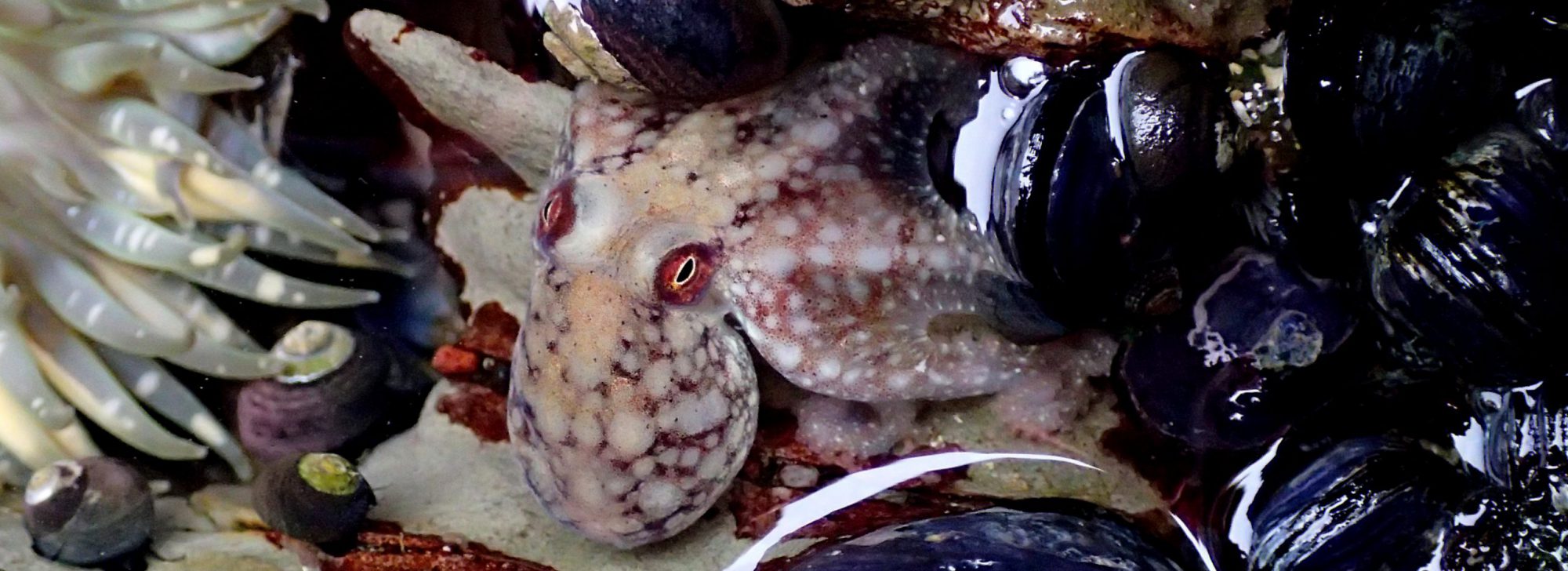I’ve always known staurozoans (Haliclystus ‘sanjuanensis’) from Franklin Point, and it goes to reason that they would be found at other sites in the general vicinity. But I’ve never seen them up the coast at Pigeon Point, just a short distance away. At Franklin Point the staurozoans live in sandy-bottom surge channels where the water constantly sloshes back and forth, which is the excuse I’ve always used for my less-than-stellar photographs of them. Pigeon Point doesn’t have the surge channels or the sand, and I’ve never seen a staurozoan there. I’d assumed that the association between staurozoans and surge channels indicated a requirement for fast-moving water.
Turns out I was wrong. Or at least, not completely right.

A few weeks ago I was doing some identifications for iNaturalist, and came upon some sightings of H. ‘sanjuanensis’ at Waddell Beach. I thought it would be a good idea to check it out–to see whether or not the staurozoans were there, and to see how similar (or not) Waddell is to Franklin Point.
Photos of the sites, first Franklin Point:

2020-06-06
© Allison J. Gong
And now Waddell:

2020-06-09
© Allison J. Gong
They don’t actually look very different, do they? But I can tell you that the channels at Franklin Point get a lot more surf action, even when the tide is at its absolute lowest, than the channels at Waddell. When we were at Waddell yesterday the channels were more like calm pools than surge channels. It sure didn’t look like staurozoan habitat to me.
Which just goes to show you how much I know. It took a while, but we found lots of staurozoans at Waddell! And since the water is so much calmer there, picture-taking was a lot easier. The animals were still active in their own way, but at least they weren’t being sloshed around continuously.

2020-06-09
© Allison J. Gong
And a lot of them had been cooperative enough to pose on pieces of the green algae Ulva, where they contrasted beautifully.

2020-06-09
© Allison J. Gong

2020-06-09
© Allison J. Gong
I was even able to capture a few good video clips!
2020-06-09
© Allison J. Gong
So, what have I learned? Well, I learned that I didn’t know as much as I thought I did. And that’s a good thing! This is how science works. Understanding of natural phenomena increases incrementally as we make small discoveries that challenge what we think we know. With organisms like these staurozoans, about which very little is known anyway, each observation could well reveal new information. The observations I made at Waddell have been incorporated into iNaturalist to join the ones that were made back in May, so little by little we are working to establish just where staurozoans live and how common they are. Maybe they aren’t quite as patchy and ephemeral as I had thought!

Beautiful photos! I’ve seen these at Pescadero Beach, not in a surge channel.
Excellent, that’s good to know! Have you been able to photograph them for iNaturalist?